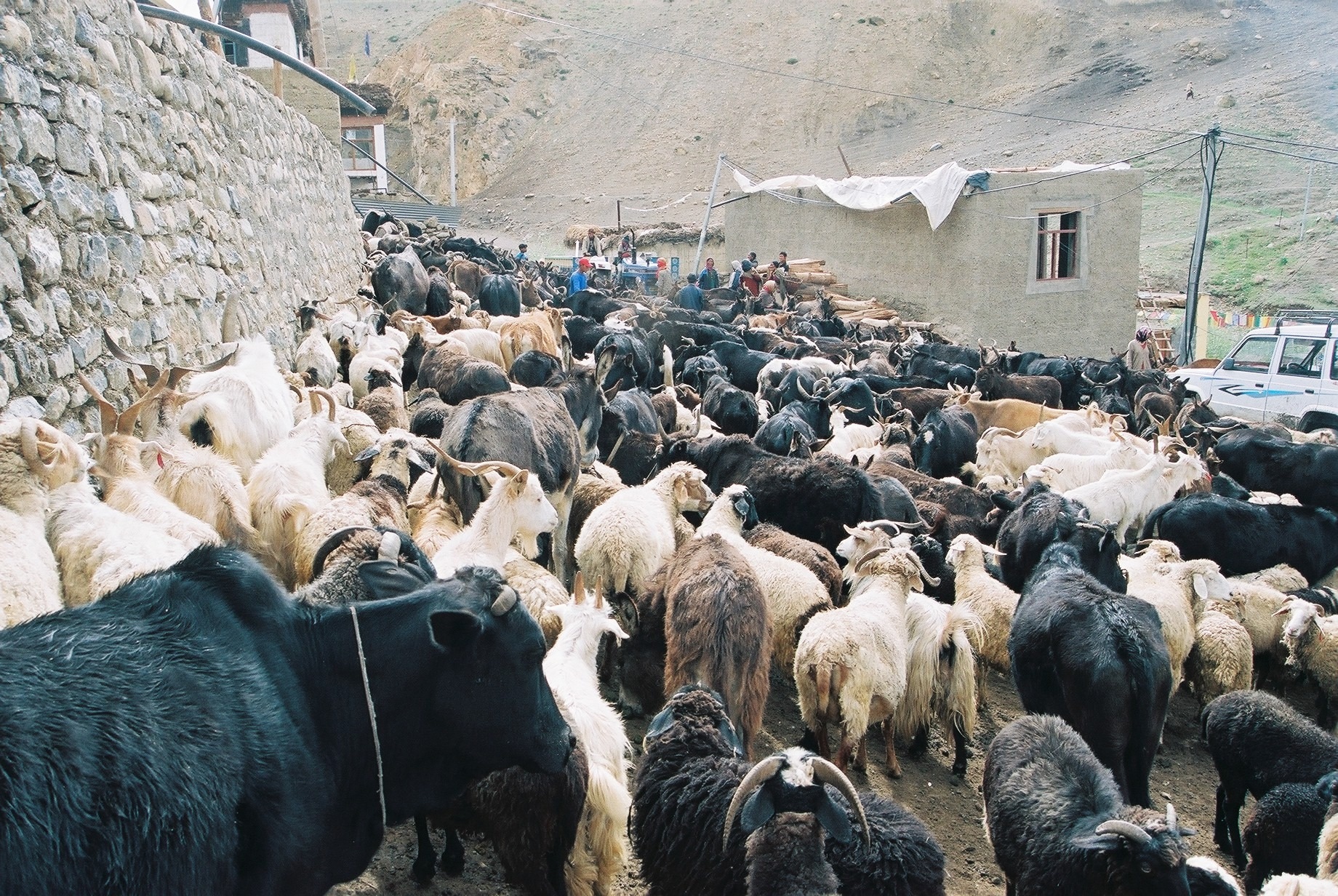Soils are dependable carbon sinks, which is critical for minimizing the consequences of climate change. Grazing by large mammals promotes soil carbon storage in grasslands, but livestock is progressively replacing wild herbivores across the world.
 One reason why soil health deteriorates under grazing by domestic livestock compared to wild herbivores is because of antibiotics. Image Credit: Sumanta Bagchi
One reason why soil health deteriorates under grazing by domestic livestock compared to wild herbivores is because of antibiotics. Image Credit: Sumanta Bagchi
Researchers from the Centre for Ecological Sciences (CES), Indian Institute of Science (IISc), discovered that livestock grazing results in lesser carbon storage in soil than grazing by wild herbivores in the Spiti area of the Himalayas.
Some of the discrepancies appear to be attributable to the usage of veterinary antibiotics on livestock, such as tetracycline. These antibiotics, when released into the soil via dung and urine, modify the microbial communities in the soil in ways that are damaging to sequestering carbon.
According to the researchers, “rewilding” the soils - reintroducing beneficial microbes lost due to antibiotics - could help balance the damage in such areas. Animals administered antibiotics should be quarantined until the medicines have passed through their systems to limit their influence on the soil.
Today, livestock are the most abundant large mammals on Earth. If the carbon stored in soil under livestock can be increased by even a small amount, then it can have a big impact on climate mitigation.”
Sumanta Bagchi, Study Corresponding Author and Associate Professor, Centre for Ecological Sciences, Indian Institute of Science
In a previous study, the researchers demonstrated how herbivore grazing plays an important role in stabilizing the pool of soil carbon in the same region. They set out to answer the question: Are livestock such as sheep and cattle similar or different in how they influence soil carbon stocks than their wild counterparts like yak and ibex?
To address this, the researchers analyzed soils in regions grazed by wild herbivores and livestock over 16 years, analyzing them for numerous factors such as microbial composition, soil enzymes, carbon stocks, and the number of veterinary antibiotics.
Bagchi added, “This is part of a long-term study on ecosystem functions and climate change in the Himalaya, which was started in 2005.”
Even though wild and livestock soils had many similarities, they varied in one critical metric known as carbon utilization efficiency (CUE), which impacts microbes’ capacity to retain carbon in the soil. The soil in livestock regions had a 19% lower CUE.
As the researchers looked further for possible causes, they discovered that the soil microbial composition in livestock areas differed from that in wild herbivore areas. Ultimately, they discovered increased amounts of antibiotic residues in the soil near livestock.
This highlights how human land use, antibiotics, microbes, soils, and climate change are deeply connected.”
Dilip Naidu, Study Author and PhD Student, Divecha Centre for Climate Change, Indian Institute of Science
Bagchi further added, “What is interesting is that antibiotic usage in pastoral ecosystems like Spiti is fairly low.”
He believed that the problem could grow worse in areas where livestock are raised on a large scale and are frequently administered antibiotics even when they are not sick. Tetracycline, for example, is a long-lasting antibiotic that can remain in the soil for decades.
Shamik Roy, study’s lead author and former PhD student at Indian Institute of Science, pointed out, “Their unregulated use not only threatens climate but also poses the risk of evolution of antibiotic resistance in pathogens that can cause difficult-to-treat infections in humans and animals.”
He further stated, “We do not yet fully understand the details of the underlying mechanisms of how soil microbial communities respond to the antibiotics, and whether they can be restored easily.”
Future research will delve into how better livestock management can reduce the negative environmental consequences of livestock, in addition to microbial restoration.
Source:
Journal reference:
Roy, S., et al. (2023). Functional substitutability of native herbivores by livestock for soil carbon stock is mediated by microbial decomposers. Global Change Biology. doi.org/10.1101/2022.02.07.479355